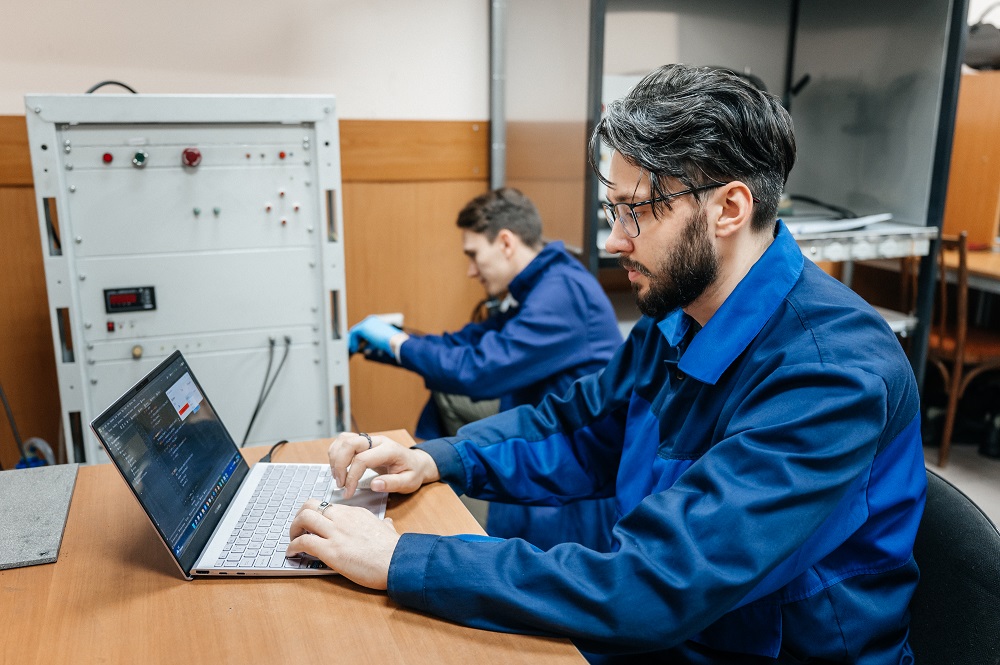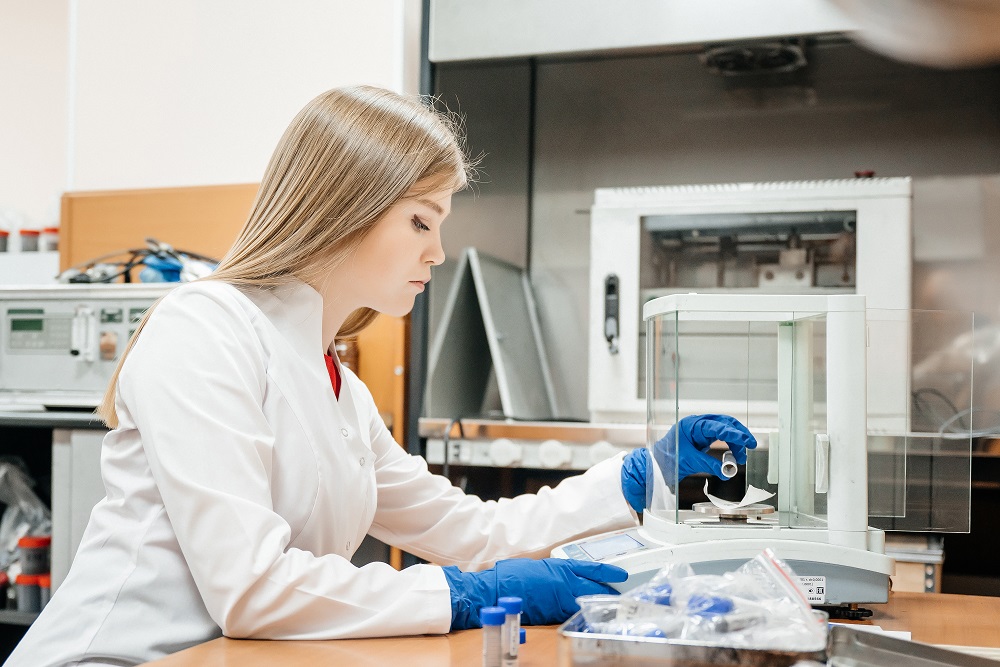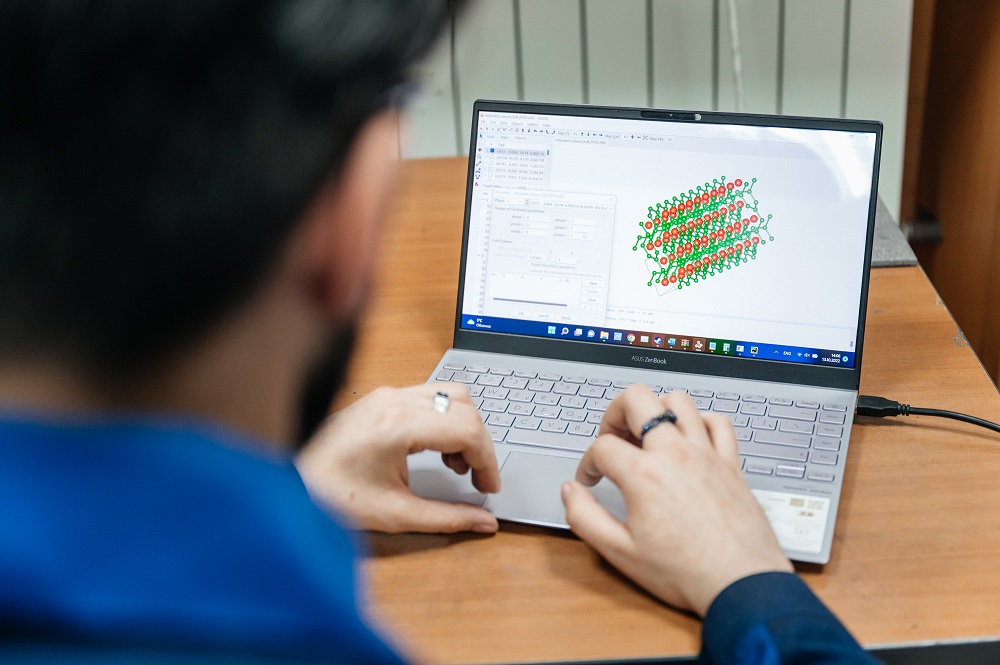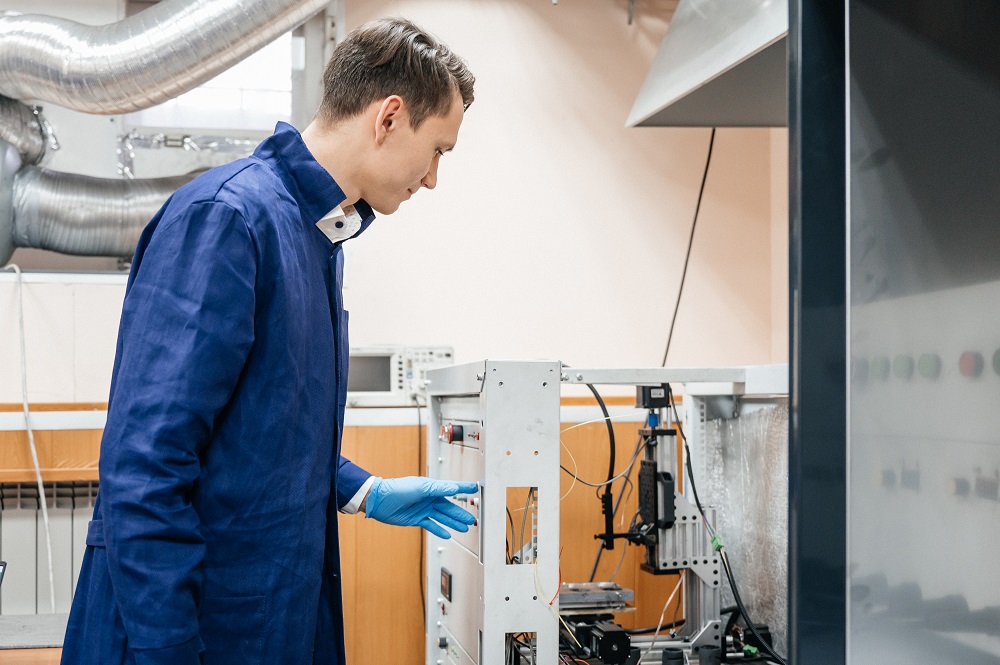THE IDEA OF DOING YOUR OWN SCIENCE
The team, as it is today, was put together in 2022. For the six years since then, we have made our way to a well-known laboratory in the global scientific community. However, it all started off in a typical fashion, with an idea and a drive to do something new, our own.
In 2008, when I was a student, I joined the research group of Prof. Alexander Sivkov, specializing in pulsed plasma accelerators. This is where I learned the basic principles of electrophysical systems and how to give life to cold machinery, and fostered a certain scientific discipline. In 2014, I defended my candidate's thesis and worked for some time in various positions at the TPU Division for Research. In 2017, I made a decision to start doing my own science. In my postgraduate thesis, I used pulsed plasma to create materials. I conceived the idea of making some useful materials, also based on some electrophysical phenomena, but by my own approach. I chose the path of practical application and utmost simplicity of equipment and methodology. This is how the prototype of our first DC arc reactor came into being,

In need of funding for his "own science", he formalized his idea into a grant. At that time, Tomsk Polytechnic University was running a program to support postgraduates and aspiring research teams having ideas to be implemented. The grant totaled 500 thousand rubles, designated exclusively for equipment and consumables. These funds were used to purchase power supplies, instrumentation, and an oscilloscope.
How to build a team from scratch:
Starting up your own research area is like moving into a new apartment, with nothing but walls in place. Back then, we had no walls either (laughing),
THEY USED TO TELL US: "IT DOES NOT WORK LIKE THAT!"
When Alexander won the grant, the team was given premises on the basement floor of Academic Building 10. At the same time, the first student joined us, and the team gradually began to find its feet.

We set about doing our first experiments. In fact, we simply ignited an arc discharge and observed how it would behave on graphite electrodes. At some point, we started feeding silicon into the same electrode, hoping that at least a small amount of silicon carbide would form together with silicon oxide, and we could study the formation patterns and properties of the well-known and highly sought-after silicon carbide. Then we X-rayed it and found that silicon carbide phase was dominant. In academic parlance, this is commonly referred to as counterintuitive approach. However, it worked. Today, our team already holds more than 10 patents for various design elements, methods, and software,
Feedback to the first research paper:
"The review of our first research paper was as follows: "What are you writing? It doesn't work like that in nature!". And the article was rejected. It appeared that at that time there were only five or eight research papers in the world describing the possible creation of carbon nanostructures by arc discharge combustion in the air. In these papers, scientists substantiated it with a kind of cushion of CO and CO2 gases, arguing about the dynamics and intensity of this process, the direction of reactions, and the phases formed. That is when we realized that our idea of plasma synthesis of various materials in the open air was feasible, but hardly known. While this method has never been used to synthesize oxide-free ceramics by anyone in the world. We conducted further studies, revised the article, and substantiated our results. After that, the reviewer did not question our findings and the paper was published".
The laboratory team is currently running a number of projects, including those supported by the Russian Science Foundation. For example, such projects as the design of methods and equipment for high-entropy materials, hydrocarbon waste processing, production of useful materials from waste, synthesis of catalytic materials, and many others.The grant we won has brought stability. As a team leader, I have no right to demand 100% commitment from a staff member if he or she does not have a steady job and stable income. The laboratory gives exactly this steady job to the staff for the next few years to come. I am very grateful to the administration of Tomsk Polytechnic University, the Ministry of Science and Higher Education and everyone involved for the creation and implementation of this program. It gives students, young scientists and postgraduates the opportunity to commit themselves to science,
 "One of our research areas is the synthesis of materials from organic feedstock, also known as biomorphic materials. These are the ceramics that replicate the structure of living tissue. We are currently at the early stages of its development at the university," the scientist adds.
"One of our research areas is the synthesis of materials from organic feedstock, also known as biomorphic materials. These are the ceramics that replicate the structure of living tissue. We are currently at the early stages of its development at the university," the scientist adds.
FIND A DEGREE-HOLDING COACH
Today, the team consists of 26 staff members, and employment of one more is in progress. Moreover, the laboratory is open to attract more young people. The main criteria is aspiration, says Alexander Pak. Please, follow the job opportunities with the team on the website or contact the laboratory engineer Arina Svinukhova directly by e-mail at aag109@tpu.ru.
As a rule, those were graduates of technical colleges. I was lucky to have a wonderful coach, a teacher of physics. She invested a lot of time and effort in me. So, I strive to convey the idea to people that there are no limits and boundaries. I have never said "no" to a single person, be it a school or university student, who crossed the threshold of my office. It is important to give them an opportunity to make their ideas come true, provided that they have the drive to do so. My doors are always open," Alexander confides.I have a sense of responsibility and my role in the life of each person who joins our laboratory. For example, we work, mostly online, with schoolchildren from remote areas of Tomsk and Kemerovo regions. For people from remote areas who have no instrumentation and unique facilities, it is a lifetime chance to join the scientific community at an early age. I was also born in a small town of Shakhtinsk, where there are no universities. Back there, a person who supervised us was commonly referred to as a coach, not a supervisor. It was virtually impossible to find a coach holding an academic degree.
The research team has its own talents, including Yulia Vasilieva, the Best TPU Postgraduate Student, and Arina Svinukhova, the Best TPU Student. Once students and now colleagues of Alexander Pak.
 "In the past, I also participated in these contests, took prizes, but I never took first place. My colleagues did, they went one step further than I once did on the same path. And this, I believe, is the right course of life. I am grateful to all members of our team, as well as to our colleagues at TPU and beyond for their professionalism, common commitment to growth, their compassion, mutual support, and, of course, for our professional and human relations," says the head of the laboratory.
"In the past, I also participated in these contests, took prizes, but I never took first place. My colleagues did, they went one step further than I once did on the same path. And this, I believe, is the right course of life. I am grateful to all members of our team, as well as to our colleagues at TPU and beyond for their professionalism, common commitment to growth, their compassion, mutual support, and, of course, for our professional and human relations," says the head of the laboratory.Tribute to mentor and friend:
"I would like to acknowledge the role of Gennady Mamontov, who, unfortunately, has already passed away. He was my research supervisor for my doctoral thesis and a true mentor. He taught me what a developing research team should be like, steered my multiple and then still incoherent endeavors in the right direction, and affected my life in general. Without his support, my doctoral thesis would have never happened or would have happened much later, years later. Our cooperation was the right symbiosis of the energy of the youth team and the experience of the older generation. This is the way it should be in science".
Young people are both difficult and easy to work with. On the one hand, you have to teach them from scratch. It takes some resources, time, energy and vigor. On the other hand, each new person has their own perspective on our work and can bring something new to the table. By the way, believe it or not, but new ideas often come from schoolchildren. With their out-of-the-box thinking, they sometimes come up with ideas that we would have never crossed our minds, says the scientist.
Modern science faces many challenges, and we have chosen to be fully involved in their solution. Therefore, we are delighted to welcome each new member of the team, marking the occasion of our team growth. New people bring new ideas and lines of thought to our work. This, certainly, is an indicator of growth and development of the entire research area".




